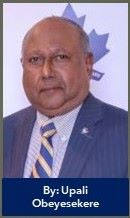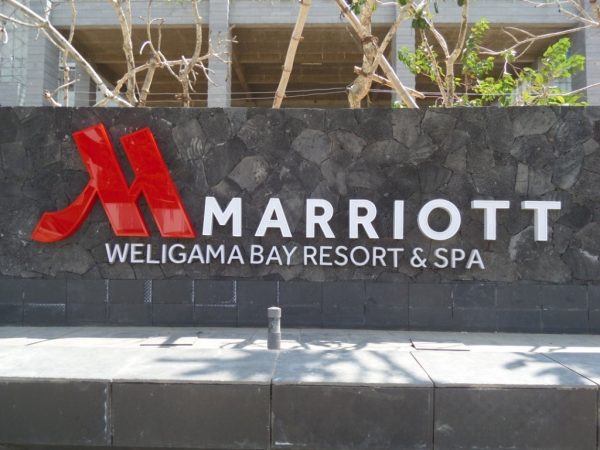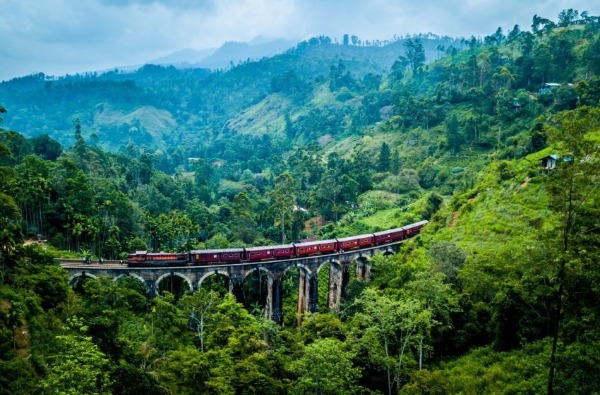MINIMUM ROOM RATES NEED REVISION IN ORDER TO INCREASE FIVE-STAR HOTEL OCCUPANCY IN COLOMBO
SRI LANKAN EXPATRIATES FORM THE ‘BREAD AND BUTTER’ OF TOURISM INDUSTRY
BY UPALI OBEYESEKERE



Believe it or not, Sri Lankan expatriates living round the world form the “bread and butter” of Sri Lanka’s tourism industry. This is a bold statement but in this writer’s humble opinion it is a true statement.
Looking at the big picture it is a proven fact statistically that Sri Lankan expatriates who live overseas form the largest group of tourists coming to Sri Lanka regularly. This is true specially after the security situation improved in 2009. It is true that a few Sri Lankan expatriates have family and friends with whom they could ‘rough it out’ during their visits to Sri Lanka.
The new trend is that a few get-together and rent a condominium (apartment) in Colombo and share the dwelling. But in the final analysis most expatriates would like to stay at a five-star hotel if the rates are reasonable and affordable. Sadly, this is not true in Colombo as room rates at five-star hotels are alarmingly over-priced. I call Sri Lankan expatriates “tourists” since majority of them travel on foreign passports.
Five-star hotels specially in Colombo have not caught on to marketing strategies adopted worldwide. It is suggested that hotels in Colombo gets rid of flat-rate room rates in existence now and introduce a two-tier rate system like how it is done in most European and North American cities.
Fix one price from Monday to Thursday and a reduced rate from Friday to Sunday. If this is done the five-star hotels in Colombo will attract a cross-section of Sri Lankan expatriates who live around the world. It is on record that occupancy rates at five-star hotels in Colombo have dropped in 2015 compared to 2014, according to reports reaching us here in Toronto.
This is not surprising as the five-star hotels have out-priced themselves from their biggest market – Sri Lankan expatriates visiting Sri Lanka. JLL reports that the occupancy rates in Colombo were 57 percent in 2014/15, compared to 60 percent in 2013/2014.
Increase of arrivals
This occupancy rate is low and one wonders how they manage to sustain themselves over time. In this writer’s humble opinion, an occupancy rate of over 75 percent is required to make a hotel run profitably.
Sri Lanka Tourism recently released tourist arrivals for 2015. Appended below is a table as compared to 2014. Sri Lanka overall has recorded a 17.8 percent increase of arrivals over 2014. This is a healthy sign for the tourism industry and Tourism Minister John Amaratunga and his team. Going forward it is strategically important to look at the future of the tourism industry and how the minister and his management team could step up and take it to its full potential.
For the hospitality industry, occupancy rate is a key metric that drives their level of success. Occupancy rate measures the number of rooms that are occupied in hotels.
A high occupancy rate, normally measured as a percentage, is a healthy sign because it indicates that most of the rooms are generating income. Occupancy rate is calculated by determining the number of available units because some of the units may not be available because of maintenance or construction or other reasons and cannot be used by guests. For instance, a hotel with 100 rooms may only have 95 rooms available and this should be the basis for the occupancy calculation.
An occupancy rate of 100% is unusual except for properties like hotels at the peak of the holiday season. Similarly, a low occupancy rate signals problems and may be due to factors such as excessively high rates, depressed economic conditions or simply poor location of the property.
Room Revenue and Profitability
For most hotels, profitability is strongly correlated with room revenues and maximizing these revenues is a top priority. The two main drivers of room revenue are occupancy rate and a metric called Average Daily Rate (ADR).
It is easy to see why having more rooms occupied at any given time will increase revenue and hence profitability. The other metric, Average Daily Rate (ADR), represents the average daily rental income per occupied room. ADR is often used to determine how well a particular hotel is doing both in comparison to its competitors and its own past record. It is easily calculated: take the total room revenue for the entire property on a given day and then divide it by the number of rooms occupied.
The potential for tourism growth in Sri Lanka is unlimited. Future growth of the industry rests on how the product is managed, promoted and delivered. We, the Sri Lanka Expatriate group around the world wish to contribute to its sustenance but within limits of affordability. Please help us to help you!







